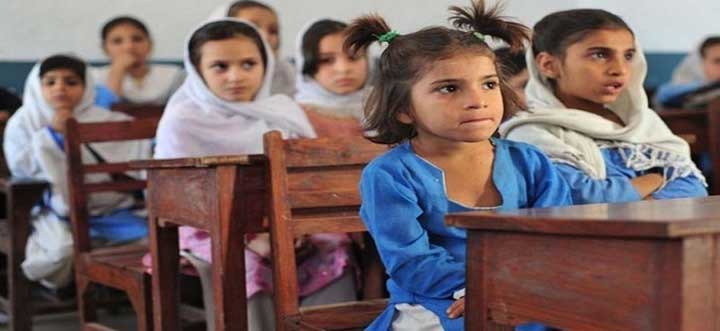By: Dilbar Ali

At a critical juncture in its history, Pakistan’s education system is undergoing a crucial phase, as illuminated by the Pakistan Education Statistics 2021-22 report issued by the Pakistan Institute of Education. This comprehensive assessment identifies evident deficiencies across various facets of the educational framework, underscoring the pressing imperative for reform. At the heart of the crisis lies the alarming number of out-of-school children, exceeding 26 million and representing nearly 40% of the nation’s youth. Despite incremental improvements in enrollment rates, a significant portion of Pakistani children are still deprived of their fundamental right to education. This ubiquitous problem not only sustains cycles of exploitation and poverty but also jeopardizes the socioeconomic advancement of the nation.
Exacerbating the situation further, the infrastructure supporting education is in a state of disrepair. The shocking disparity in resource allocation between areas is exemplified by the fact that just 15% of schools in Balochistan have access to electricity. Inadequate teacher training programs, inadequate sanitary facilities, and a dearth of student transportation choices hamper students’ access to high-quality education.
Struggling to keep pace with global advancements. Pakistan’s educational system is hindered by insufficient infrastructure, which includes inconsistent access to power and the internet. In contrast, other developed countries are enthusiastically embracing artificial intelligence (AI) and digital innovation to improve their educational institutions. Students are significantly hampered in their capacity to properly utilize the wealth of educational resources accessible online by this absence of necessary utilities, which puts them at a huge disadvantage in the current learning environment. The structural problems resulting from government negligence and inefficient policies exacerbate these difficulties. Despite the gravity of the situation, insufficient budget allocations and a lack of political will to prioritize education have perpetuated the crisis in the education sector. This inability to address underlying issues has hindered efforts to provide high-quality education to every child in Pakistan, intensifying already-existing inequalities and expanding the gulf between Pakistan and other countries in the international education sector. As Pakistan struggles with these serious issues, officials must move quickly to reorient the educational system onto a more sustainable and egalitarian course. Increased investment in infrastructure, including reliable electricity and internet access, is essential to bridge the digital divide and ensure that all students have equal opportunities to succeed in the digital age. Comprehensive changes are also required to address structural problems including out-of-date curricula, insufficient teacher preparation, and uneven resource allocation among regions. Without meaningful reforms and concerted efforts to address these challenges, Pakistan risks falling further behind in an increasingly competitive global arena. Politicians must place a high priority on education as a fundamental human right and allot enough funding to create a strong, inclusive education system that enables every Pakistani child to reach their full potential in the age of technology. Pakistan can overcome its educational issues and create a better future for coming generations only by working together and committing to change.
In spite of that, all hope is not lost. To revitalize Pakistan’s educational system and unleash the potential of its young, concrete initiatives may be implemented. To solve infrastructural gaps and promote access to high-quality education for all, it is crucial to expand investment in education and implement targeted legislative changes.
Moreover, the use of technology can improve the learning process and help bridge the digital divide. Another approach to improving education is by investing in teacher training programs and encouraging digital literacy among both educators and students. Furthermore, in order to bring about significant change in the education sector, it is imperative that government agencies, civil society organizations, and the commercial sector form partnerships. Pakistan’s youth can create a better future by collaborating to address systemic issues and promoting innovative solutions. The reforms in the educational system are inevitable and demand urgent attention due to the significant challenges they face. Pakistan has the opportunity to unlock the potential of its young people and pave the way for a more prosperous future by prioritizing education, making crucial infrastructural investments, and embracing technology. It’s essential for decision-makers to give precedence to addressing the needs of the country’s children, its most precious resource.
The writer is a freelance columnist. He can be reached at [email protected]



